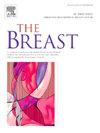Therapeutic strategies for fungating and ulcerating breast cancers: A systematic review and narrative synthesis
IF 5.7
2区 医学
Q1 OBSTETRICS & GYNECOLOGY
引用次数: 0
Abstract
Background
To identify optimal therapeutic strategies for managing fungating, large or ulcerating breast tumors and highlight existing gaps in the literature.
Methods
We conducted a systematic search of Medline, Embase, APA, PsycInfo, CAB abstracts, Scopus, and Web of Science from inception to June 30, 2024, including studies on patients with fungating, large, or ulcerating breast cancers.
Results
The search identified 7917 studies, with 79 meeting the inclusion criteria: 62 case reports, 7 case series, and 10 cohort studies. Owing to high heterogeneity, a narrative synthesis was performed, categorizing treatment by year, molecular subtype, histology, and staging. We found that treatment modalities increased, from an average of two in luminal-B cancers to three in HER2-positive cases, with over half achieving complete response. Triple-negative breast cancers averaged two modalities, with around half showing only partial response. Cohort analysis revealed a significant positive correlation between metastasis rate and radiotherapy use (Spearman's rho = 0.828, p = 0.042) and between chemotherapy and hormonal therapy use (rho = 0.69, p = 0.04). Median survival was positively correlated with surgical treatment (rho = 0.82, p = 0.046).
Conclusions
Local treatment is crucial for symptomatic palliation in fungating or ulcerating breast tumors, and histology should guide therapeutic choices. While local treatments remain primary, emerging systemic therapies show promise and may soon become first-line options. As the first systematic review on this topic, our study faced considerable source heterogeneity, precluding a meta-analysis. Instead, we analyzed treatment trends by demographics and tumor characteristics, providing a comprehensive overview and encouraging further research in this area.
求助全文
约1分钟内获得全文
求助全文
来源期刊

Breast
医学-妇产科学
CiteScore
8.70
自引率
2.60%
发文量
165
审稿时长
59 days
期刊介绍:
The Breast is an international, multidisciplinary journal for researchers and clinicians, which focuses on translational and clinical research for the advancement of breast cancer prevention, diagnosis and treatment of all stages.
 求助内容:
求助内容: 应助结果提醒方式:
应助结果提醒方式:


